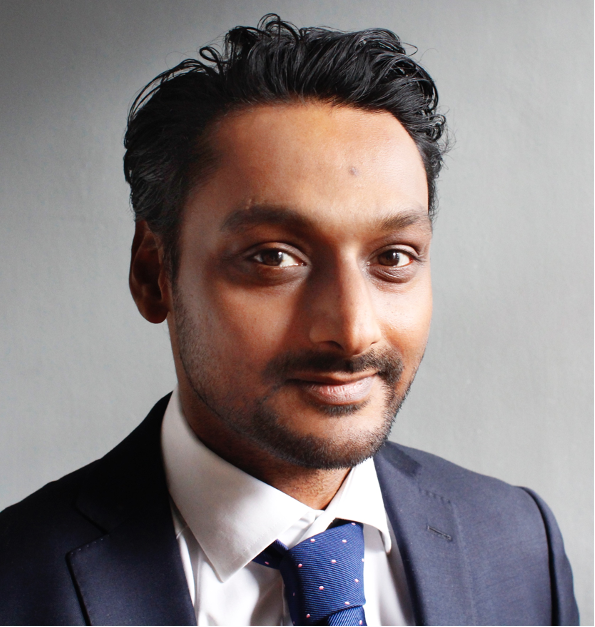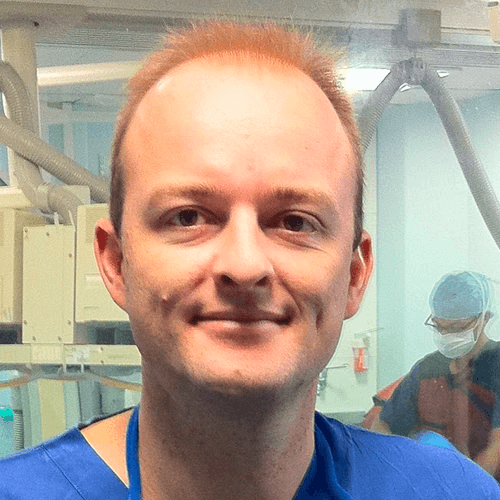21
Oct
2021
18:00
BST
19:00
CEST
13:00
EST
Webinar
Understanding Functional Substrate Mapping Techniques In VT Ablation To Improve Outcomes
-
Views:
 4056
4056
-
Likes:
 8
8
Overview
Mapping and ablation of post-infarct related ventricular tachycardia (VT) remains a challenge. Conventional activation and entrainment methods are limited by poorly tolerated VT’s, multiple VT’s, complex circuits and the deleterious effects of mapping in VT on cardiac, renal and cerebral function. The resultant effect is poor long term outcomes.
Classical substrate mapping techniques predominantly involve mapping ventricular scar substrate in intrinsic rhythm, however, VT circuits may be dynamic, and substrate characteristics may not be static or prevalent in intrinsic rhythm. Emerging functional substrate assessment methods of VT ablation may improve outcomes from VT ablation and may be safer by reducing the need for the patient to be in VT for prolonged periods of time.
This webinar discusses presently available techniques.
Faculty:

Andreu Porta-Sánchez

Neil T Srinivasan

John Silberbauer

Juan Acosta
This is a Radcliffe Cardiology Independent production in association with Arrhythmia and Electrophysiology Review Journal.
Agenda
Learning Objectives
This webinar is to inform and educate on:
- Understanding the limitations of conventional VT approaches
- Understanding the rationale for functional substrate assessment
- How to Practically Perform DeEP mapping
- How to practically perform SENSE PROTOCOL mapping
- Understand how hidden slow conduction identification improves outcomes
Target Audience
This webinar is aimed at:
- Cardiac Electrophysiologists
- Nurses
- Cardiac Physiologists
- Technicians
Faculty Biographies

Andreu Porta-Sánchez
Personal History
Dr Andreu Porta-Sanchez is a Postdoctoral Scientist and a Staff Cardiologist based in Madrid, Spain.
He is a specialist in the field of complex arrhythmias including hereditary and genetic arrhythmias, ventricular tachycardia, atrial fibrillation, hisian pacing and cardiac resynchronization. He also specialises in ablation procedures with catheters.2
Academic History
Dr Porta-Sánchez graduated from the Universitat de Barcelona in 2007 and started his residency in cardiology at Hospital Universitari Vall d’Hebron in Barcelona. After completing his residency, he received a post-graduate training grant from La Caixa Banking Foundation and pursued further clinical and research training in arrhythmia at the University of Toronto, Canada, from 2014 until 2017.1
He completed his Masters in Methodology of Clinical Research at Universitat Autònoma de Barcelona in 2017. In 2018, he was awarded his first competitive grant as a PI from Sociedad Española de Cardiología for a clinical project in electroanatomical mapping. In 2019, Dr Porta-Sánchez completed his PhD atthe Universitat de Barcelona with his thesis entitled New Techniques Treatment of Ventricular Tachycardia, which received an excellent cum laude rating.2
Career Overview
Dr Porta-Sánchez combines his clinical work as an Adjunct Doctor of the Arrhythmia Unit at Hospital Universitario Quirónsalud Madrid and Ruber Juan Bravo, where he specialises in complex arrhythmia ablation procedures with catheters and conducts his research at the Molecular Cardiology Laboratory of the National Center for Cardiovascular Research.1, 2
Dr Porta-Sánchez is also an Associate Professor of Medicine at the European University and has received the European Certification of Specialist in Electrophysiology. He is the author of numerous publications in scientific journals and his research career has been recognized with honourable mentions at two international conferences.2
He is an active member of EHRA and is the co-chair of the Selection Committee and the EHRA Young EP Ambassador for Spain. He is also one of the members of the central list of Experts for panels in Medical Devices for the European Commission.4
Career Timeline
- Hospital Universitari de la Vall d'Hebron
- 2008 - 2013: Cardiology Resident
- 2013 - 2014: Electrophysiology Fellow
- 2014 - 2017: Cardiac Electrophysiology Fellow, University Health Network, Toronto, Canada
- 2017 - Present: Staff Cardiologist, Arrhythmia Unit, Hospital Universitario Quirón Madrid y Hospital Ruber Juan Bravo
- 2017 - Present: Post-doctoral Scientist, Spanish National Center for Cardiovascular Research/Centro Nacional de Investigación Cardiovascular (CNIC)
Areas of Speciality
- Cardiac Rhythmology
- Complex Arrhythmias
Recognitions
- EHRA / Europace 2015 and Heart Rhythm Society Meeting 2017: Honorable Mention, Best Young Researcher
Sources
- https://arrhythmiaacademy.com/authors/andreu-porta-sanchez/
- https://www.quironsalud.es/hospital-madrid/es/cuadro-medico/andreu-porta-sanchez
- https://www.linkedin.com/in/andreu-porta-s%C3%A1nchez-79891074/
- https://loop.frontiersin.org/people/1371727/bio

Neil T Srinivasan
Dr Neil Srinivasan is a Consultant Cardiologist and Electrophysiologist and clinical academic at The Essex Cardiothoracic Centre. He is a Senior Lecturer at ARU medical school. He was previously a Locum Consultant at the Barts Heart Centre in London where he was the lead for Ventricular Tachycardia Ablation and The Lister Hospital where he was the lead for Electrophysiology.
Dr Srinivasan trained in cardiac rhythm management at The Heart Hospital in Marylebone and the Barts Heart Centre in London. During this time he undertook a PhD at the University College London (UCL) studying the mechanisms of VT/VF. He has undertaken a period of research at Washington University St Louis USA as part of this, developing non-invasive methods (ECGi) of studying the heart rhythm. He has also undertaken an observational VT fellowship in Leiden with Professor Katja Zeppenfeld. He has presented his work at national and international conferences and co-authored many major papers in the field. Recently, has pioneered the "Sense Protocol" method of functional substrate mapping in VT which has improved outcomes in VT ablation.
Dr Srinivasan is a member of the Arrhythmia & Electrophysiology Review editorial board.

Juan Acosta
Personal History
Dr Juan Acosta Martínez is a physician at the Hospital Universitario Virgen del Rocío, Seville, Spain.1
Academic History
In 2007, Dr Martínez obtained his Degree in Medicine from the University of Seville. He completed his MIR Cardiology Training at Virgen del Rocío Hospital from 2008 to 2013 and also trained in Electrophysiology and Cardiac Pacing in the Arrhythmia Unit of the Hospital Clínic de Barcelona.1
He received Accreditation in Electrophysiology by the Arrhythmias and Electrophysiology Section of the Spanish Society of Cardiology in 2015 and the European Heart Rhythm Association in 2016.1
Career Overview
He is currently a Faculty Member and an Area Specialist Physician in the Arrhythmia Unit of the Virgen del Rocío Hospital.1, 2
Career Timeline
- Present: Doctor of Medicine, Hospital Universitario Virgen del Rocío, HUVR Department of Cardiology
Areas of Speciality
- Cardiac Electrophysiology
- Arrhythmias
Sources

John Silberbauer
John Silberbauer is a Consultant Cardiologist and Electrophysiologist working at the Sussex Cardiac Centre in Brighton. He has a special interest in ventricular arrhythmia ablation and enjoys teaching and research within the field. He undertook a 2-year VT fellowship under the tutelage of Dr Paolo Della Bella in Milan and has pioneered the Coronary Vein Exit and CO2 Insufflation technique for epicardial VT access.





